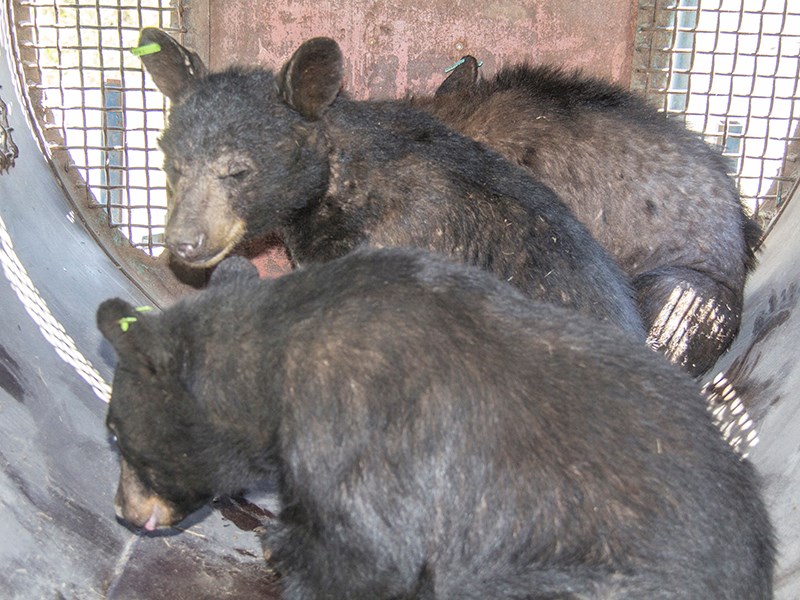Four young bears were released by BC Conservation Officer Service (COS) in the Powell River backcountry on Wednesday, May 11, after being trapped by a resident in November.
For the last seven months the bears were held at Critter Care Wildlife Society (CCWS) in Langley, BC.
“A lot of resources go into preparing these cubs to be released back into the wild,” said BC conservation officer Andrew Anaka.
According to Anaka, the rehabilitation and release of the bears required one officer to drive down to the Lower Mainland, retrieve the bears and return to Powell River, and two officers a full day to release them.
“I’m glad to see four bears survived,” said Anaka. “It’s a bit rewarding to see live animals being returned back to the wild.”
According to COS inspector Murray Smith, a total of 14 bears were reared over the winter at CCWS before being returned to the wild.
Four bears were released in the Lower Mainland, six in Sechelt and four in Powell River. The bears were all returned to the zone where they had been captured in an effort to protect the gene pools of the area populations.
Trapped as cubs at approximately six months old by Powell River resident Susan MacKay, the four Powell River bears were released as 16-month-old subadults.
The release took place 11 months after BC conservation officer Bryce Casavant drew international attention for refusing to kill a pair of orphaned black bear cubs on Vancouver Island.
According to MacKay, she was directly involved in trapping the bears in Powell River and said the Casavant incident motivated her actions.
She said she told COS that she would “call in the media” if she was not allowed to trap the bears. She said she told them, “I am saving these bears.”
According to Smith, for the most part, MacKay worked in conjunction with local conservation officers.
“I don’t think we should paint this as a member of the public exceeding their authority, because we were involved in all stages,” said Smith.
Despite MacKay’s actions, Smith said COS does not want to see the public involved in any endeavour to capture wild animals.
With about 140,000 black bears, BC has one of the highest populations in the world. According to Smith, the rehabilitation and release of black bears is an effort to address public concerns.
“We do it primarily because it’s a chance for these bears,” said Smith. “Generally, that’s what the public wants. They want to see that these bears are provided an opportunity to be relocated successfully.”
According to Smith, the rehabilitation and release of these 14 bears was not a public relations exercise.
“We know the public would like to see alternatives to bears being destroyed and at this point this is the option we have,” he said.
According to Anaka and Smith, after all of the efforts to save the cubs, there is no way to know with any certainty that the bears will survive in the wild.
“We moved them as far away as we could and hope that they’re not going to come into conflict with people again, but who knows?” said Anaka. “It’s really anybody’s guess.”
The area where the bears were released is populated by loggers, hikers and campers.
“People are up here all of the time,” said Anaka. “Could these bears get back into conflict with them? Sure they could, and only time is going to tell.”



